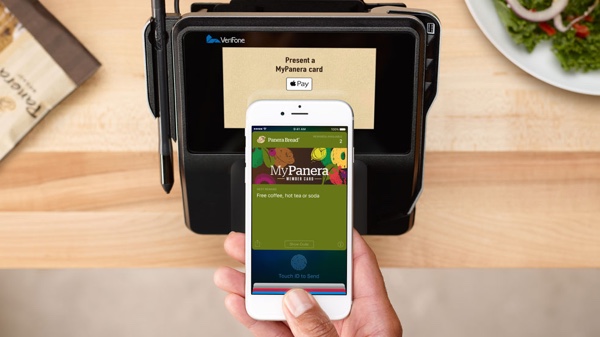In today’s digital age, tapping and swiping have become second nature. From mobile games to social media apps and even online shopping, these simple gestures often lead to rewards—be it a new level unlocked, a burst of likes, or a shiny badge for completing a task.
But why are these actions so addictive? What is it about tapping and swiping for rewards that keeps us coming back for more? The answer lies in the fascinating interplay of psychology, neuroscience, and behavioral design, which taps into the very core of human motivation.

The Dopamine Rush: Our Brain’s Reward System
At the heart of our love for tapping and swiping is dopamine, the brain’s feel-good neurotransmitter. Dopamine is released when we anticipate a reward, creating a sense of pleasure and motivation. Every time you swipe to refresh your social media feed or tap to open a loot box in a game, your brain is primed for a potential hit of excitement. This anticipation is key—it’s not just the reward itself but the possibility of it that keeps us hooked.
This mechanism is no accident. App and game designers carefully craft experiences to trigger dopamine release. The unpredictability of rewards, known as variable reward schedules, is particularly powerful. You don’t know if the next swipe will reveal a viral post, a rare in-game item, or a generic ad, and that uncertainty fuels curiosity. This concept is borrowed from slot games, where players keep pulling the lever in hopes of hitting the jackpot, even though the outcome is random.
The Power of Instant Gratification
Humans are wired to seek instant gratification, a trait rooted in our evolutionary past when immediate rewards—like food or shelter—were critical for survival. Tapping and swiping cater to this instinct by delivering quick, bite-sized outcomes. Unlike long-term goals that require patience, these actions provide instant feedback: a notification ping, a colorful animation, or a point tally climbing higher.
This immediacy is amplified by the tactile nature of touchscreens. The physical act of tapping or swiping feels intuitive and engaging, creating a seamless loop between action and reward. Studies suggest that touch-based interactions increase emotional engagement compared to clicking with a mouse, making mobile devices the perfect medium for reward-driven behaviors.
Gamification: Turning Tasks into Play
Another reason we’re drawn to tapping and swiping is gamification—the art of applying game-like elements to non-game contexts. Apps like Duolingo, Fitbit, or even Starbucks’ rewards program use points, streaks, and leaderboards to make mundane tasks feel like a game. Swiping to log a workout or tapping to claim a free coffee transforms routine actions into mini-quests with tangible payoffs.
Gamification leverages our desire for achievement and social validation. When we earn a badge or climb a leaderboard, we feel a sense of progress and status. Social media platforms take this further by tying rewards to social interactions—likes, comments, and shares become digital high-fives that boost our self-esteem. The act of swiping through stories or tapping to like a post isn’t just about consuming content; it’s about chasing those micro-moments of validation.
The Illusion of Control
Tapping and swiping also give us a sense of control in an unpredictable world. Each gesture feels like an active choice, even if the outcome is determined by an algorithm. This illusion of control is a powerful motivator. In psychology, it’s linked to the concept of self-efficacy—the belief that our actions can influence results. When you tap to spin a virtual wheel or swipe to match tiles, you feel like you’re driving the action, even if the system is rigged to keep you engaged.
This mirrors the appeal of slot machines, where pulling the lever creates a fleeting sense of agency. The randomness of the reward is cloaked in the act of participation, making it feel earned rather than arbitrary. App designers borrow heavily from this playbook, ensuring that every tap or swipe feels meaningful, even when the stakes are low.
The Dark Side: When Tapping Becomes Compulsive
While tapping and swiping can be fun and rewarding, there’s a flip side. The same psychological triggers that make these actions enjoyable can lead to compulsive behavior. The variable reward system, combined with endless content streams, can trap users in a cycle of seeking the next hit. Social media “doomscrolling” or excessive gaming are examples of how these mechanics can hijack attention, sometimes at the expense of mental health or productivity.
Research from the University of Cambridge (2023) suggests that excessive use of reward-based apps can overstimulate the brain’s reward pathways, leading to diminished satisfaction over time. What starts as a quick tap to check notifications can spiral into hours lost, as the brain chases diminishing returns. Awareness of these patterns is crucial for maintaining a healthy balance.
Why We Keep Coming Back
Ultimately, our love for tapping and swiping boils down to how these actions align with our psychological wiring. They offer instant gratification, a sense of control, and the thrill of unpredictable rewards—all wrapped in a tactile, user-friendly package. By borrowing techniques from gambling and gaming, like those seen in slot games, designers create experiences that are hard to resist.
But understanding the psychology behind these behaviors empowers us to engage more mindfully. The next time you find yourself swiping through a feed or tapping for a virtual reward, take a moment to notice the pull. It’s not just a habit—it’s a carefully orchestrated dance between your brain and the screen, choreographed to keep you coming back for more.
By recognizing these triggers, we can enjoy the fun of tapping and swiping without letting it take over. After all, the real reward is staying in control of our own attention.
You may also like to check out:
- Download: iOS 18.4 Final IPSW Links, OTA Update For iPhone, iPadOS 18.4 For iPad Released
- Jailbreak iOS 18.4 Status For iPhone And iPad Update
- iOS 18 Hidden Features For iPhone And iPad [100+ List]
- How To Fix Bad iOS 18 Battery Life Drain On iPhone
- Fix iOS 18 WiFi: Keeps Dropping, Not Working, Disconnecting Or Slow? Here’s What To Do
You can follow us on X, or Instagram, subscribe to our YouTube channel and even like our Facebook page to keep yourself updated on all the latest from Microsoft, Google, Apple, and the Web.

